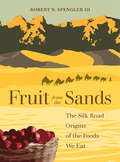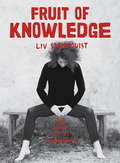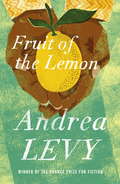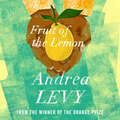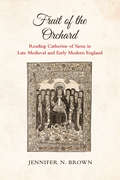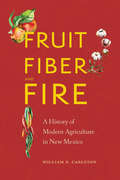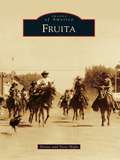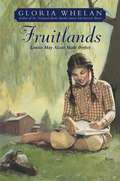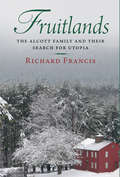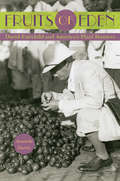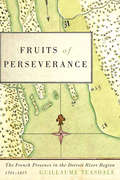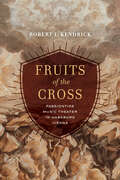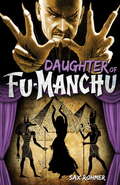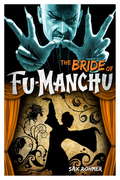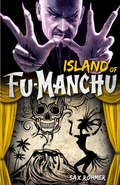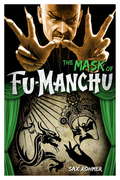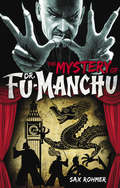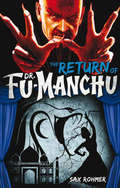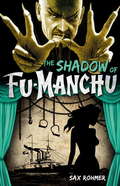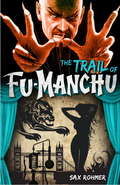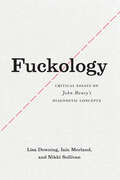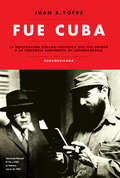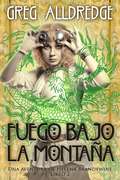- Table View
- List View
Fruit from the Sands: The Silk Road Origins of the Foods We Eat
by Robert N. Spengler IIIThe foods we eat have a deep and often surprising past. From almonds and apples to tea and rice, many foods that we consume today have histories that can be traced out of prehistoric Central Asia along the tracks of the Silk Road to kitchens in Europe, America, China, and elsewhere in East Asia. The exchange of goods, ideas, cultural practices, and genes along these ancient routes extends back five thousand years, and organized trade along the Silk Road dates to at least Han Dynasty China in the second century BC. Balancing a broad array of archaeological, botanical, and historical evidence, Fruit from the Sands presents the fascinating story of the origins and spread of agriculture across Inner Asia and into Europe and East Asia. Through the preserved remains of plants found in archaeological sites, Robert N. Spengler III identifies the regions where our most familiar crops were domesticated and follows their routes as people carried them around the world. With vivid examples, Fruit from the Sands explores how the foods we eat have shaped the course of human history and transformed cuisines all over the globe.
Fruit of Knowledge
by Liv Strömquist'How I loved reading Fruit of Knowledge ... Clever, angry, funny and righteous, also informative to an eye-popping degree' Rachel Cooke, OBSERVER GRAPHIC NOVEL OF THE MONTHFrom Adam and Eve to pussy hats, people have punished, praised, pathologised and politicised vulvas, vaginas, clitorises, and menstruation. In the international bestseller Fruit of Knowledge, celebrated Swedish cartoonist Liv Strömquist traces how different cultures and traditions have shaped women's health and beyond. Her biting, informed commentary and ponytailed avatar guides the reader from the darkest chapters of history (a clitoridectomy performed on a five-year-old American child as late as 1948) to the lightest (vulvas used as architectural details as a symbol of protection). Like Alison Bechdel and Jacky Fleming, she uses the comics medium to reveal uncomfortable truths about how far we haven't come.'Just the thing for all the feminists in your life' Observer Books of the Year'This book made me laugh in public (and also cry a little). It is the book I gave to my younger sister the next time I saw her because of its anger and brilliance and because it is an overwhelming source of knowledge about things we should all already know' Daisy Johnson, author of the Man Booker Prize-shortlisted Everything Under 'There are moments of genuine hilarity, as when Strömquist pictures the dinner party chatter of men living under a matriarchy, and others of fierce anger in this wild, witty and vital book' Observer Books of the Year
Fruit of the Lemon
by Andrea LevyA unique novel full of humour, wit and passion from Andrea Levy, critically acclaimed author of the Orange Prize winning SMALL ISLAND and the Man Booker shortlisted THE LONG SONG.Faith Jackson fixes herself up with a great job in TV and the perfect flatshare. But neither is that perfect - and nor are her relations with her overbearing, though always loving family. Furious and perplexed when her parents announce their intention to retire back home to Jamaica, Faith makes her own journey there, where she is immediately welcomed by her Aunt Coral, keeper of a rich cargo of family history. Through the weave of her aunt's storytelling a cast of characters unfolds stretching back to Cuba and Panama, Harlem and Scotland, a story that passes through London and sweeps through continents.
Fruit of the Lemon
by Andrea LevyThe third and most ambitious novel from this unique and acclaimed writer, FRUIT OF THE LEMON establishes Andrea Levy alongside Arundhati Roy and Meera Syal in the first rank of British fiction.Faith Jackson fixes herself up with a great job in TV and the perfect flatshare. But neither is that perfect - and nor are her relations with her overbearing, though always loving family. Furious and perplexed when her parents announce their intention to retire back home to Jamaica, Faith makes her own journey there, where she is immediately welcomed by her Aunt Coral, keeper of a rich cargo of family history. Through the weave of her aunt's storytelling a cast of characters unfolds stretching back to Cuba and Panama, Harlem and Scotland, a story that passes through London and sweeps through continents.(P) 2022 Headline Publishing Group Ltd
Fruit of the Lemon: A Novel
by Andrea LevyA unique novel full of humour, wit and passion from Andrea Levy, critically acclaimed author of the Orange Prize winning SMALL ISLAND and the Man Booker shortlisted THE LONG SONG.Faith Jackson fixes herself up with a great job in TV and the perfect flatshare. But neither is that perfect - and nor are her relations with her overbearing, though always loving family. Furious and perplexed when her parents announce their intention to retire back home to Jamaica, Faith makes her own journey there, where she is immediately welcomed by her Aunt Coral, keeper of a rich cargo of family history. Through the weave of her aunt's storytelling a cast of characters unfolds stretching back to Cuba and Panama, Harlem and Scotland, a story that passes through London and sweeps through continents.
Fruit of the Orchard: Reading Catherine of Siena in Late Medieval and Early Modern England
by Jennifer N. BrownFruit of the Orchard sheds light on how Catherine of Siena served as a visible and widespread representative of English piety becoming a part of the devotional landscape of the period. By analyzing a variety of texts, including monastic and lay, complete and excerpted, shared and private, author Jennifer N. Brown considers how the visionary prophet and author was used to demonstrate orthodoxy, subversion, and heresy. Tracing the book tradition of Catherine of Siena, as well as investigating the circulation of manuscripts, Brown explores how the various perceptions of the Italian saint were reshaped and understood by an English readership. By examining the practice of devotional reading, she reveals how this sacred exercise changed through a period of increased literacy, the rise of the printing press, and religious turmoil.
Fruit, Fiber, and Fire: A History of Modern Agriculture in New Mexico
by William R. CarletonFor much of the twentieth century, modernization did not simply radiate from cities into the hinterlands; rather, the broad project of modernity, and resistance to it, has often originated in farm fields, at agricultural festivals, and in agrarian stories. In New Mexico no crops have defined the people and their landscape in the industrial era more than apples, cotton, and chiles. In Fruit, Fiber, and Fire William R. Carleton explores the industrialization of apples, cotton, and chiles to show how agriculture has affected the culture of twentieth-century New Mexico. The physical origins, the shifting cultural meanings, and the environmental and market requirements of these three iconic plants all broadly point to the convergence in New Mexico of larger regions—the Mexican North, the American Northeast, and the American South—and the convergence of diverse regional attitudes toward industry in agriculture. Through the local stories that represent lives filled with meaningful struggles, lessons, and successes, along with the systems of knowledge in our recent agricultural past, Carleton provides a history of the broader culture of farmers and farmworkers. In the process, seemingly mere marginalia—a farmworker&’s meal, a small orchard&’s advertisement campaign, or a long-gone chile seed—add up to an agricultural past with diverse cultural influences, many possible futures, and competing visions of how to feed and clothe ourselves that remain relevant as we continue to reimagine the crops of our future.
Fruita (Images of America)
by Steve Hight Denise HightWilliam Pabor arrived in Western Colorado before the advent of irrigation, and the land presented a barren and desolate sight. But he saw something entirely different. "In the spring of 1884, lying on the bare floor of a log cabin on the site of what is now the town of Fruita, I watched the moonbeams play on the Roan Cliffs and across Pinon Mesa," Pabor wrote. "The silence of centuries seemed resting upon the plain. . . . But visions of the possibilities of the future swept before me. I saw homes founded, I saw family circles gathered together. I saw vineyards and orchards, and rose-embowered cottages in which love and happiness and contentment abode. . . . I heard the merry voices of children yet to be born. I heard the singing of harvesters bringing in the sheaves of golden grain." Pabor soon turned vision into reality and founded the town of Fruita.
Fruitlands
by Gloria WhelanWe are all going to be made perfect . . . In 1843, with all their possessions loaded onto a single wagon, ten-year-old Louisa May Alcott and her family bravely set out into the wilderness to make a new home for themselves on a farm called Fruitlands. Louisa's father has a dream of living a perfect, simple life. It won't be easy, but the family has vowed to uphold his high ideals. In her diary -- one she shares with her parents -- Louisa records her efforts to become the girl her parents would like her to be. But in another, secret diary, she reveals the hardships of this new life, and pours out her real hopes and worries. Can Louisa live up to her father's expectations? Or will trying to be perfect tear the family apart?
Fruitlands: The Alcott Family and Their Search for Utopia
by Richard FrancisThis is the first definitive account of Fruitlands, one of history's most unsuccessful--but most significant--utopian experiments. It was established in Massachusetts in 1843 by Bronson Alcott (whose ten-year-old daughter Louisa May, future author of Little Women,was among the members) and an Englishman called Charles Lane, under the watchful gaze of Emerson, Thoreau, and other New England intellectuals. Alcott and Lane developed their own version of the doctrine known as Transcendentalism, hoping to transform society and redeem the environment through a strict regime of veganism and celibacy. But physical suffering and emotional conflict--particularly between Lane and Alcott's wife, Abigail--made the community unsustainable. Drawing on the letters and diaries of those involved, Richard Francis explores the relationship between the complex philosophical beliefs held by Alcott, Lane, and their fellow idealists and their day-to-day lives. The result is a vivid and often very funny narrative of their travails, demonstrating the dilemmas and conflicts inherent to any utopian experiment and shedding light on a fascinating period of American history.
Fruits of Eden: David Fairchild and America's Plant Hunters
by Amanda HarrisAt the turn of the nineteenth century—when most food in America was bland and brown and few people appreciated the economic potential of then-exotic foods—David Fairchild convinced the U.S. Department of Agriculture to finance overseas explorations to find and bring back foreign cultivars. Fairchild traveled to remote corners of the globe, searching for fruits, vegetables, and grains that could find a new home in American fields and in the American diet.In Fruits of Eden, Amanda Harris vividly recounts the exploits of Fairchild and his small band of adventurers and botanists as they traversed distant lands—Algeria, Baghdad, Cape Town, Hong Kong, Java, and Zanzibar—to return with new and exciting flavors. Their expeditions led to a renaissance not only at the dinner table but also in horticulture, providing diversity of crops for farmers across the country.Not everyone was supportive, however. The scientific community was concerned with invasive species, and World War I fanned the flames of xenophobia in Washington. Adversaries who believed Fairchild’s discoveries would contaminate the purity of native crops eventually shut down his program, but his legacy lives on in today’s modern kitchen, where navel oranges, Meyer lemons, honeydew melons, soybeans, and durum wheat are now standard.
Fruits of Perseverance: The French Presence in the Detroit River Region, 1701-1815 (McGill-Queen's French Atlantic Worlds Series #4)
by Guillaume TeasdaleFounded by French military entrepreneur Antoine Laumet de Lamothe Cadillac in 1701, colonial Detroit was occupied by thousands of French settlers who established deep roots on both sides of the river. The city's unmistakable French past, however, has been long neglected in the historiography of New France and French North America. Exploring the French colonial presence in Detroit, from its establishment to its dissolution in the early nineteenth century, Fruits of Perseverance explains how a society similar to the rural settlements of the Saint Lawrence valley developed in an isolated place and how it survived well beyond the fall of New France. As Guillaume Teasdale describes, between the 1730s and 1750s, French authorities played a significant role in promoting land occupation along the Detroit River by encouraging settlers to plant orchards and build farms and windmills. After New France's defeat in 1763, these settlers found themselves living under the British flag in an Aboriginal world shortly before the newly independent United States began its expansion west. Fruits of Perseverance offers a window into the development of a French community in the borderlands of New France, whose heritage is still celebrated today by tens of thousands of residents of southwest Ontario and southeast Michigan.
Fruits of the Cross: Passiontide Music Theater in Habsburg Vienna
by Robert L. KendrickIn this first detailed study of seventeenth-century sepolcri—sacred operas written for court performance on Holy Thursday and Good Friday—Robert L. Kendrick delves into the political and artistic world of Habsburg Vienna, in which music and ritual combined on the stage to produce a thoroughly original art form based on devotion to Christ’s Tomb. Through the use of allegorical characters, the musical dramas ranged from the devotionally intense, to the theologically complex, to the ugly anti-Jewish, but played a unique role in making Passion piety relevant to wider cultural concerns. Fruits of the Cross suggests that understanding the sepolcri has implications for the theatricalization of devotion, the power of allegory, the role of queenship in court ideology, the interplay between visuality and music, and not least the intellectual centrality of music theater to court self-understanding.
Fu-Manchu: Daughter of Fu-Manchu
by Sax RohmerAcross the sands of Egypt, Nayland Smith pursues Fah Lo Suee, the deadly daughter of Fu-Manchu. Possessed of all her father's subversive secrets and driven by his unquenchable thirst for power, she has pillaged the tomb of the Black Ape for the key to its ancient mysteries - and therefore leadership over all the evil cults of the East. No one can stop her - except perhaps Fu-Manchu himself!A brand-new edition of the classic novel.
Fu-Manchu: The Bride of Fu-Manchu
by Sax RohmerA strange epidemic sweeps the French Riviera - a biological weapon created by Dr. Fu-Manchu. Dr. Petrie is called upon by the French authorities, and when the truth emerges, Denis Nayland-Smith is summoned to help stop his arch-foe before he can succeed in spreading his plague across Europe. As they struggle to contain the horror, Petrie's friend, the botanist Alan Sterling cannot stop thinking of the mysterious Fleurette, unaware that the beautiful girl he chanced upon was raised by the emperor of evil himself, Dr. Fu-Manchu. One of the finest novels in the series, its biological theme is a precursor to Ian Fleming's On Her Majesty's Secret Service, and Fu-Manchu himself is the prototypical Dr. No.
Fu-Manchu: The Island of Fu-Manchu
by Sax RohmerThe year is 1941, and the world is engulfed in war. Having consolidated his forces, Fu-Manchu seeks to tip the balance of power by launching assaults from a hidden stronghold in the Caribbean. His target: the United States naval forces, just entering the global conflict. To stop the Devil Doctor, Sir Denis Nayland Smith and his ally, Bart Kerrigan, pick up the trail in London during the blackout, following it to New York, then the Panama Canal, and finally the land of voodoo--Haiti. There they face the enemy's deadly combination of advanced technology and deep-rooted mysticism!ALSO IN THIS VOLUMEA LONG-LOST NAYLAND SMITH SHORT STORY!AFTERWORD BY LESLIE S. KLINGER
Fu-Manchu: The Mask of Fu-Manchu
by Sax RohmerAfter discovering the tomb of El Mokanna - the Veiled Prophet - and retrieving the precious relics buried there, the eminent archaeologist Sir Lionel Barton blows up the tomb. The heretic sect faithful to Mokanna interpret the fireball as their prophet's second coming, and a violent uprising begins. Meanwhile, the insidious Dr. Fu-Manchu senses an opportunity to use the powerful relics for his own evil ends. The action stretches from Persia to Cairo, then back to London, including an extraordinary confrontation inside of the Great Pyramid. Along the way his opponents face Ogboni killers, mind-control drugs, dervishes, and a "ghost mosque."
Fu-Manchu: The Mystery of Dr. Fu-Manchu
by Sax RohmerLondon, 1913--the era of Sherlock Holmes, Dracula, and the Invisible Man. A time of shadows, secret societies, and dens filled with opium addicts. Into this world comes the most fantastic emissary of evil society has ever known... Dr. Fu-Manchu.Denis Nayland Smith pursues his quarry across continents and through the back alleys of London. As victim after victim disappears at the hands of the Devil Doctor, Smith must unravel his murderous plot before it is too late. Includes a special feature by Leslie S. Kilnger
Fu-Manchu: The Return of Dr. Fu-Manchu
by Sax RohmerLondon, 1913--the era of Sherlock Holmes, Dracula, and the Invisible Man. A time of shadows, secret societies, and dens filled with opium addicts. Into this world comes the most fantastic emissary of evil society has ever known... Dr. Fu-Manchu.The insidious doctor returns to Great Britain with his league of assassins, the dreaded Si-Fan. He seeks to subvert the realm at the highest levels, but Fu-Manchu has his own secrets--which he will protect by any means.
Fu-Manchu: The Shadow of Fu-Manchu
by Sax RohmerWorld War II has ended. The United States is locked in a Cold War with the Eastern Bloc. It's the time of mutually assured destruction, yet the atomic bomb isn't the only weapon to fear. And the Soviets have another enemy with whom to contend.Dr. Morris Craig has developed an energy weapon with the potential for unlimited destruction--whoever controls it could tip the balance of global power. The quest for Craig's invention once again brings Fu-Manchu to New York City, his mission to prevent the Communists from acquiring the device. But who can keep it out of the hands of the Devil Doctor himself?
Fu-Manchu: The Trail of Fu-Manchu
by Sax RohmerThe seventh book of the complete, fully authorized series written by the creator of Fu-Manchu, the acclaimed Sax Rohmer. Following the events of The Bride of Fu-Manchu, it is considered one of Rohmer's finest.Fu-Manchu is trapped, cornered in London and cut-off from his resources, including the elixir vitae that grants him eternal life. But under the Thames, the devil doctor practices the dark art of sorcery, and it will be up to Nayland Smith and Scotland Yard to stop him. But Fu-Manchu may possess the key to victory, when he kidnaps Dr. Petrie's wife, Fleurette!ALSO IN THIS BOOK: The first of three lost novels by Sax Rohmer, starring Fu-Manchu's eternal nemesis, Sir Denis Nayland Smith.
Fu-go: The Curious History of Japan's Balloon Bomb Attack on America (Studies in War, Society, and the Military)
by Ross CoenNear the end of World War II, in an attempt to attack the United States mainland, Japan launched its fu-go campaign, deploying thousands of high-altitude hydrogen balloons armed with incendiary and high-explosive bombs designed to follow the westerly winds of the upper atmosphere and drift to the west coast of North America. After reaching the mainland, these fu-go, the Japanese hoped, would terrorize American citizens and ignite devastating forest fires across the western states, ultimately causing the United States to divert wartime resources to deal with the domestic crisis. While the fu-go offensive proved to be a complete tactical failure, six Americans lost their lives when a discovered balloon exploded. Ross Coen provides a fascinating look into the obscure history of the fu-go campaign, from the Japanese schoolgirls who manufactured the balloons by hand to the generals in the U.S. War Department who developed defense procedures. The book delves into panic, propaganda, and media censorship in wartime. Fu-go is a compelling story of a little-known episode in our national history that unfolded virtually unseen.
Fuckology: Critical Essays on John Money's Diagnostic Concepts
by Lisa Downing Iain Morland Nikki SullivanOne of the twentieth century’s most controversial sexologists—or “fuckologists,” to use his own memorable term—John Money was considered a trailblazing scientist and sexual libertarian by some, but damned by others as a fraud and a pervert. Money invented the concept of gender in the 1950s, yet fought its uptake by feminists. He backed surgical treatments for transsexuality, but argued that gender roles were set by reproductive capacity. He shaped the treatment of intersex, advocating experimental sex changes for children with ambiguous genitalia. He pioneered drug therapy for sex offenders, yet took an ambivalent stance towards pedophilia. In his most publicized case study, Money oversaw the reassignment of David Reimer as female following a circumcision accident in infancy. Heralded by many as proof that gender is pliable, the case was later discredited when Reimer revealed that he had lived as a male since his early teens. In Fuckology, the authors contextualize and interrogate Money's writings and practices. The book focuses on his three key diagnostic concepts, “hermaphroditism,” “transsexualism,” and “paraphilia,” but also addresses his lesser-known work on topics ranging from animal behavior to the philosophy of science. The result is a comprehensive collection of new insights for researchers and students within cultural, historical, and gender studies, as well as for practitioners and activists in sexology, psychology, and patient rights.
Fue Cuba: La infiltración cubano-soviética que dio origen a la violencia subversiva en... (Caballo de fuego #Volumen)
by Juan B. Yofre"Sólo el compañero Ernesto Guevara y unos pocos revolucionarios sabencuándo salió y qué ha estado haciendo en este tiempo. Desde luego, losimperialistas estarían muy interesados en saber, con todos los detalles,dónde está, qué ha hecho y cómo lo hace. Y, desde luego, no lo saben."Fidel CastroCuba, marzo de 1965. Fidel Castro inspecciona con satisfacción elpasaporte falso de Ernesto "Che" Guevara, parado a su lado y yatransformado en Ramón Benítez. Parece mucho más gordo; lleva sombrero,gruesos anteojos, prótesis bucal y zapatos que aumentan su estatura.Estaba en marcha la "Operación Manuel", y la Argentina, junto a otrospaíses de América Latina, pasaría a ser víctima del más exitoso procesode infiltración del castrismo.Poco después de la Crisis de los Misiles, y bajo el atento control delos soviéticos, representantes de los distintos movimientosrevolucionarios de América Latina recibieron instrucción militar paravolver a sus países de origen e instalar allí focos guerrilleros.Documentación falsa, identidades robadas, contrabando, planes deespionaje, entrenamiento físico, provisión de armas, análisis detácticas militares.Por primera vez salen a la luz los documentos desconocidos de la Agenciade Inteligencia Checoslovaca con la información de quiénes participaronen las operaciones secretas que intentaban promover el comunismo enAmérica.Fue Cuba traza la historia del proceso de sovietización de la isla y, almismo tiempo, analiza los cambios internos dentro de la revolución, queexponen muchos interrogantes: ¿cuándo se produce la fisura entre el Chey Fidel con respecto a América Latina? ¿Por qué desaparece Guevara de laescena política cubana? ¿Cuáles fueron los verdaderos motivos de supergeñada muerte?Un libro fundamental para entender el origen de este proceso que desatóuna guerra revolucionaria, con civiles militarmente preparados paratomar el poder en sus países a sangre y fuego.
Fuego bajo la montaña: La aventura de Helena Brandywine Book 2 (A Helena Brandywine Adventure #2)
by Greg AlldredgeUna joven mujer busca a su familia en una mágica California de 1899. La segunda aventura de Helena Brandywine. Algunas cosas son peores que la muerte. Helena Brandywine tenía lo que algunos considerarían una vida idílica y mimada durante la época dorada de San Francisco. Pero lugo de descubrir feas verdades sobre su familia y su comunidad se encontró con las trampas del poder y la riqueza, de las cuales escapó para buscar a sus padres. Enemigos acechan en cada esquina mientras nuevas fuerzas se preparan para avanzar contra ella. Un antiguo dragón que liberó accidentalmente continúa acosándola. Sin saber en quién confiar, espera encontrar traición entre sus más cercanos aliados. ¿Quienes son las figuras sombrías en su contra? ¿Podrá Helena rescatar a sus padres? ¿Morirá intentandolo? O, aún peor, ¿terminará en un hospital psiquiátrico? No te pierdas Fuego bajo la montaña, el segundo de la serie de Helena Brandywine por Greg Alldredge. Si te gusta la aventura y la fantasía con una fuerte heroína, ¡entonces esta novela de Steampunk para jóvenes adultos te tendrá pasando las páginas a toda velocidad! ¡Ven a verlo!
